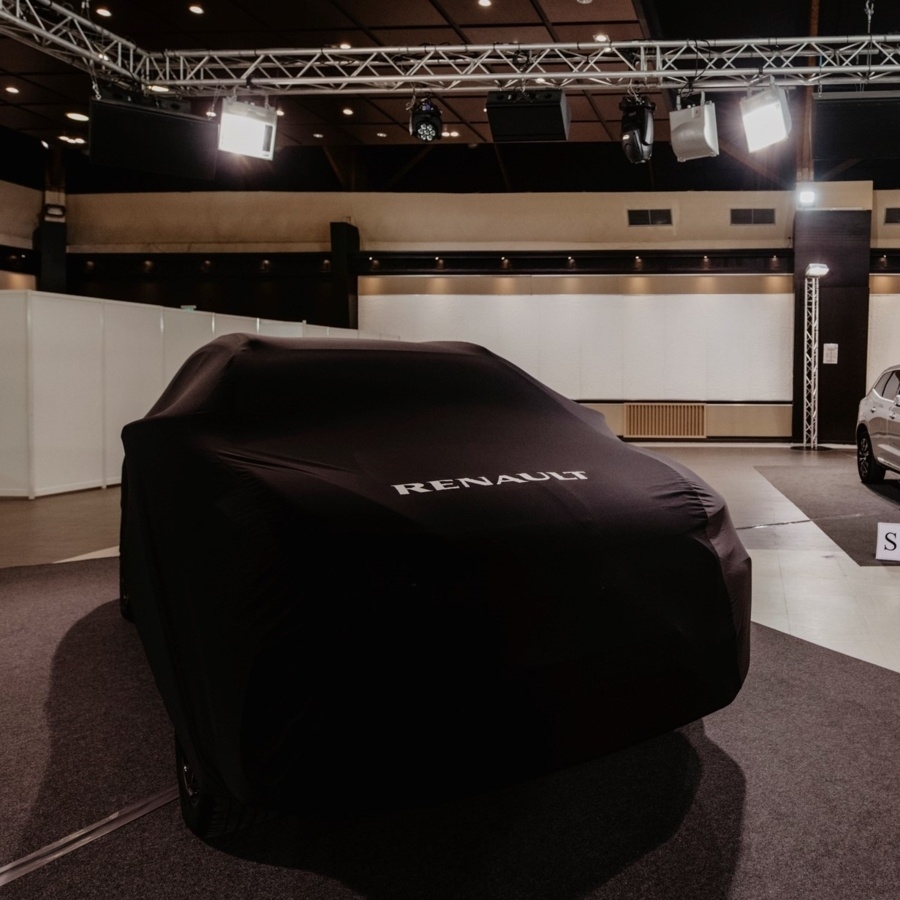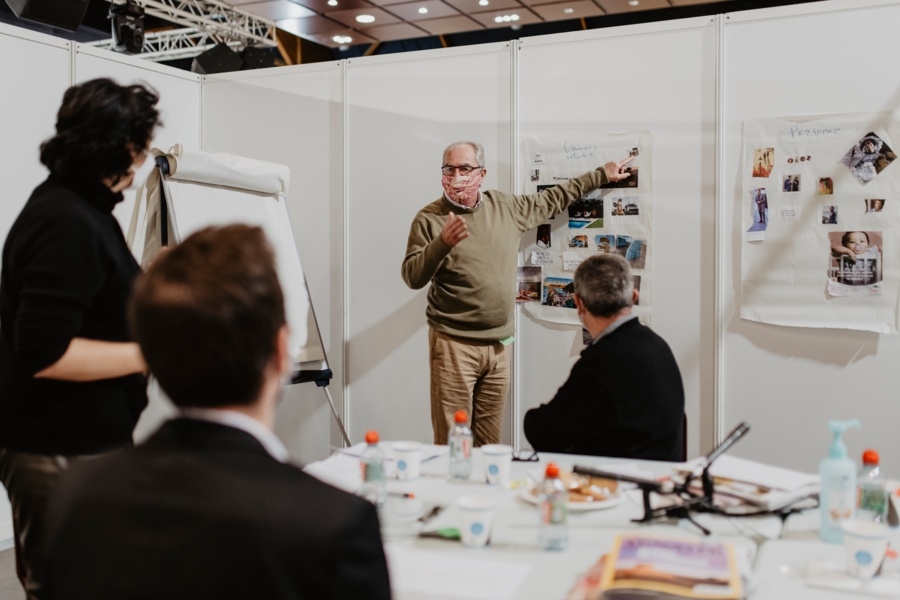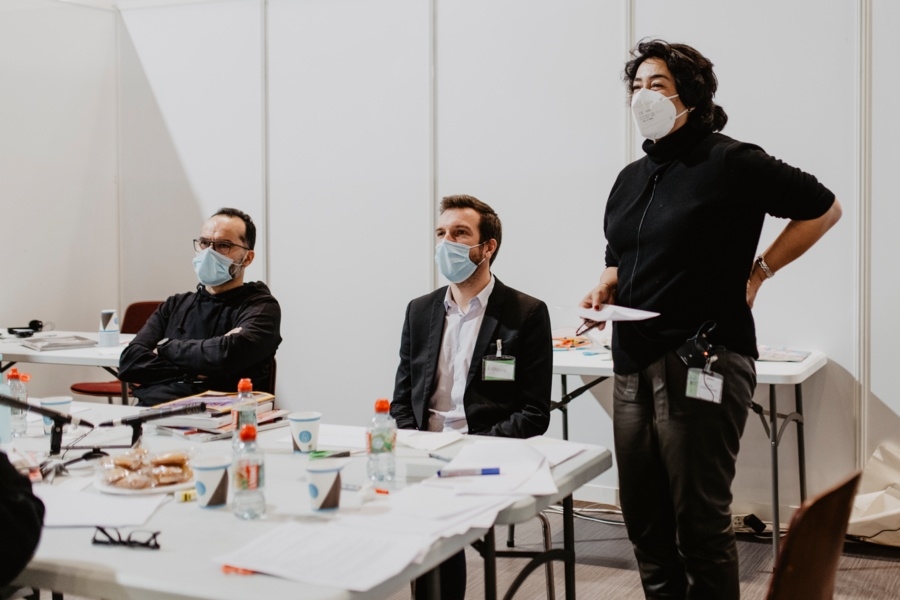Clinic tests: voice of customers
During surveys known as “clinic tests”, potential customers are given the chance to discover the first prototype of a future vehicle in total secrecy. Clinic tests are therefore an opportunity for Renault project teams to identify people’s first impressions, address their opinions and reach an important verdict three years ahead of the launch of a new vehicle. For teams at a carmaker like Renault, who have already been working on a project for months, it’s a decisive moment that enables them to check that the value created by the vehicle is fully picked up on by potential customers. Céline, Customer Intelligence Manager and customer insight expert for Renault Group, took us behind the scenes to unveil some of the mystery surrounding vehicle clinic tests.
11 January 2022
Originating in the medical context, the word “clinic” comes from the Greek term for caring for patients in their sickbed. But, in the automobile context, it is the customers who enthusiastically choose to replace patients as the subjects of observation.
“When you have been working on a future vehicle for over two years, you’re excited to present it to potential customers and see if they appreciate your efforts!”
Céline, Customer Insight Expert
CLINIC TESTS, A STUDY THAT CAN COMPLETELY SHIFT A PROJECT
Just one year ago, the Renaulution strategic plan confirmed Renault Group’s ambition to launch vehicles and services that would create even more value for customers, while reducing the time needed for their development. Launching cars with stronger assets and much earlier requires better incorporating customers’ requirements and requests. Clinic tests are therefore a direct extension of this approach.
Clinic tests elicit and analyse reactions from a panel of potential customers when they discover a new vehicle alongside its competition. The tests involve gathering and interpreting all of their opinions, reactions and emotions, both verbal and non-verbal. This means checking upstream that all of the ingredients that are so crucial for the success of a new car will be available when it goes on sale. A convincing concept, attractive design, appeal compared to rival models and reasonably priced services are all criteria that will go under scrutiny. The aim is to confirm that the vehicle in development is on the right track in the eyes of customers and, as a result, for project teams and executive management.
Céline says, “the clinic test is an important event that the project teams really look forward to – and much more. It’s a moment of truth and confirmation for a vehicle in development.”

Project vehicle alongside with competitors vehicles
Renault Group is set to launch 24 new vehicles by 2025, including 10 electric models as part of the Renaulution strategic plan. As a result, the success of these studies and the indications they provide are of major importance. Five to ten clinics are held every year. Teams at the Customer Intelligence Department and specialist agencies are therefore always working to bring about ambitious and promising product plans. Céline explains, “the fact that the prototypes for almost all of the cars launching in 2024 were tested and presented as early as 2021 gives you an idea of the collective anticipation and fast pace that we are currently maintaining.”
PLACING PARTICIPANTS, TEAMS (AND VEHICLES) IN THE BEST CONDITIONS
A clinic test involves at least eight weeks of upstream planning and organisation. Following a strict list of specifications established by the Customer Intelligence Department at Renault Group, specialised market research companies design and generally guide all aspects of the tests: selecting participants and locations, setting up and logistics, planning and running the event, and gathering and interpreting data, as well as producing the final report and representing customers during consultation and decision-making.
Meticulousness and creativity are essential when it comes to implementing the right resources for the test to run smoothly. Every detail is important – right down to the physical positioning of the vehicles, so as not to influence the customers or create any form of bias. And last but by no means least, complete confidentiality must be ensured at every step of the test. The release of any confidential information could have unwanted repercussions for Renault Group and the company carrying out the study. To prevent this risk, teams from the Prevention and Protection Department at Renault Group are also involved at every stage preparing these trials, and security officers are present on the day itself.

Listening carefully on customers feedbacks
Given that the clinic test takes place three years before the start of sales of a vehicle – i.e., almost halfway through its five-year development – there is usually only one prototype available for all of the company’s requirements. The availability of this scarce resource therefore dictates the scheduling of clinic tests, which must find their place in a general schedule covering the needs of the entire company. The Customer Intelligence Department recently doubled (and, in some cases, tripled) the number of countries included in each clinic test in order to gather a wider variety of responses. The entire process must therefore run like a well-oiled machine. Presenting the same vehicle in multiple countries at the same time is impossible; each prototype must be transported in a safe and confidential manner from one test site to another. Each prototype is treated like a handmade and priceless individual part. Once on site, the vehicle must be presented in the best conditions while being protected from any risk of damage; again, there is no room for error.
Céline points out, “we have to show the new car alongside others, as if it were in a showroom. Participants must be able to realise the prototype’s proportions and get to grips with its characteristics, with realistic and familiar points of reference, so they can get an accurate first impression.”
Together, in another room, the project team can listen in on the participants’ reactions. This always leads to interesting and passionate discussions. The tension and excitement arising from this initial reveal always spurs productive conversations. If participants take too long to understand the concept or react unexpectedly, the tension is palpable – but there’s a great sigh of relief if the first signs are positive. Each piece of feedback is likely to provoke heated reactions and spontaneous debates between the members of the project team. No clinic test goes by without comments like, “I told you that wouldn’t work,” or, “you see, we were right to believe in that and insist on it!” Participants often make odd remarks, creating moments of comedy that bring the whole project team together for a well-deserved laugh. Indeed, each employee experiences the clinic test as though the viability of the entire project depends on it – which is why they put so much into this intense event.
TRIAL OUTCOMES THAT ARE TRICKY TO HEAR OR INCORPORATE INTO THE PROJECT
As a general rule, all analysis from a clinic test should be transferable within the six weeks following the event. But the main conclusions and any obstacles should be pointed out even earlier. Time is of the essence, particularly given that the schedule needs to incorporate the estimated time to develop any countermeasures recommended by the trial.

Potential customer expressing his feedback thanks to a set of chosen images
But usually, unless there has been some kind of disaster, the teams do not have to start out from a blank slate or change the structure of the vehicle after the clinic test. Nevertheless, Céline recalls, “we have had to bring some projects to a halt.” Teams have also on occasion had to postpone events or maintain extremely tight schedules in order to incorporate essential adjustments. The clinic test now takes place just before the design of the vehicle is locked in. Renault Group recently brought forward this step in its project milestone schedule in order to free up time for remedial measures that proved impossible to include in its previous iteration. Whether revising bodywork or rear design components, adding new parts when their absence would cause problems (like sunroofs, for example), or redesigning interior pieces that were missing or simply not up to scratch, any possible room for manoeuvre is a good thing – particularly for significant large pieces that will require extensive work.
CLINIC TESTS THAT REVEAL THE CHANGING SCOPE OF THE AUTOMOTIVE INDUSTRY
Recently, tests in general – including clinics – have brought to light new and interesting information. For example, customers are expressing increasingly mature and specific expectations of electric vehicles. Range, performance and economy, as well as charging infrastructure aspects, now all figure among their concerns and are brought up in discussions. Electric and electrified vehicles occupy a growing part of the European market and the Renault range in particular. So promises must be kept in this area.

Attendees are 100% focused
“Recent clinic tests taken to prepare to mount an offensive for a product announced a year ago as part of the Renaulution revealed customers’ growing concerns regarding electric and electrified vehicles – How quickly will charging infrastructure be rolled out more widely? How and where can you charge? How much does charging cost? Etc. Participants are asking questions about their new hopes for these services, in addition to the more classic expectations they have of these vehicles.”
Although these concerns are relatively recent in the automotive industry and clients’ minds, they are not new to Renault Group. Its solid experience and valuable perspective means the Group is ready to account for these new subjects and rise to emerging challenges.
TAKING PART IN CLINIC TESTS: THE PARTICIPANTS’ EXPERIENCEAll participants in the clinic tests are chosen from a pool of people that is constantly checked and updated by the specialist market research company in charge. According to the size and sector of that company, the database could include thousands of people. These databases are constantly increased and renewed, with thousands of new participants added and deleted every year. Participating voluntarily is encouraged and, in general, applications can be made directly on the market research companies’ websites. Controlling the participant selection process is also key, if not the most visible stage; indeed, it is what makes – or breaks – the reputation of the market research company.
Applicants are chosen according to how well they match the target customer for the project being trialled. Socio-demographic profiles – i.e. age, gender, family and professional situation – are taken into account, as is the participants’ place of residence and their use of and relation to the product. The brands and models of the vehicles they already own are also, naturally, hugely important. But that’s not all; in no circumstances may the participant have any proximity to or connection with the subject being studied. The market research company must check and guarantee that all of these criteria have been adhered to. This means that neither Renault Group employees, nor competitors or journalists, may be chosen to take part in automobile clinic tests. What’s more, no one person can take part in too many trials. Market research companies must make sure that the participants are always in a state of discovery and able to give spontaneous and uncalculated responses; using experienced, almost professional participants is simply not an option. By the way, the lucky ones must sign a very strict confidentiality agreement. |
Renault, a historic mobility brand and pioneer of electric vehicles in Europe, has always developed innovative vehicles. With the ‘Renaulution’ strategic plan, Renault has embarked on an ambitious, value-generating transformation moving towards a more competitive, balanced and electrified range. Its ambition is to embody modernity and innovation in technology, energy and mobility services in the automotive industry and beyond.
media library (17)
- all (17)
- Images (16)
- videos (1)
Renault, a historic mobility brand and pioneer of electric vehicles in Europe, has always developed innovative vehicles. With the ‘Renaulution’ strategic plan, Renault has embarked on an ambitious, value-generating transformation moving towards a more competitive, balanced and electrified range. Its ambition is to embody modernity and innovation in technology, energy and mobility services in the automotive industry and beyond.



















